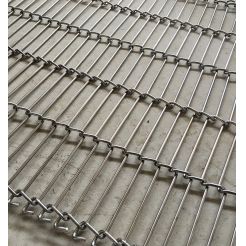magnetic alloy
Product Description
https://www.tpasteel.com/resources/properties-of-magnetic-alloys.html
Magnetic alloys
Nickel is a versatile element and will alloy with most metals. Complete solid solubility exists between nickel and copper. Wide solubility ranges between iron, chromium, and nickel make possible many alloy combinations.
Magnetic alloys
Magnetic alloys are alloys engineered to have special magnetic properties.
Permalloy is the term for a nickel iron magnetic alloy. Generically, it refers to an alloy with about 20% iron and 80% nickel content. Permalloy has a high magnetic permeability, low coercivity, near zero magnetostriction, and significant anisotropic magnetoresistance. The low magnetostriction is critical for industrial applications, where variable stresses in thin films would otherwise cause a ruinously large variation in magnetic properties. Permalloy's electrical resistivity generally varies within the range of 5% depending on the strength and the direction of an applied magnetic field.
Permalloy is used in transformer laminations and magnetic recording head sensors. In its initial application, Permalloy was wrapped around the insulated copper conductors of telecommunication cables, reducing signal distortion through improved inductive compensation of cable capacitive reactance.
The right conditions for transmitting signals through cables without distortion were first worked out mathematically by Oliver Heaviside. After a prolonged search, Permalloy was discovered in 1914 by Gustav Elmen of Bell Laboratories, who found it had higher permeability than silicon steel. Later, in 1923, he found its permeability could be greatly enhanced by heat treatment. Other compositions of Permalloy are available, designated by a numerical prefix denoting the percentage of nickel in the alloy, for example 45 Permalloy containing 45% nickel, and 55% iron. Molybdenum Permalloy is an alloy of 81% nickel, 17% iron and 2% molybdenum. The latter was invented at Bell Labs in 1940. At the time, when used in long distance copper telephone lines, it allowed a tenfold increase in maximum line working speed.
Supermalloy is an alloy composed of Ni (79%), Mo (5%), and Fe.
It is a magnetically soft material. The resistivity of the alloy is 6 nΩ·cm2/cm. It has a high magnetic permeability and a low coercivity. Supermalloy is used in manufacturing of components of radio engineering, telephony, and telemechanics instruments.
Mu-metal
Mu-metal is a nickel-iron alloy (75% nickel, 15% iron, plus copper and molybdenum) that has very high magnetic permeability. Permeability is represented by μ.
The high permeability makes mu-metal very effective at screening static or low-frequency magnetic fields, which cannot be attenuated by other methods.
Mu metal requires special heat treatment — annealing in hydrogen atmosphere, which reportedly increases the magnetic permeability about 40 times. The annealing alters the material's crystal structure, aligning the grains and removing some impurities, especially carbon. Mechanical treatment may disrupt the material's grain alignment, leading to drop of permeability in the affected areas, which can be restored by repeating of the hydrogen annealing step.
Mu-metal is used to shield equipment from magnetic fields. For example:
Vacuum chambers for experiments with low-energy electrons, for example photoelectron spectroscopy
Magnetic resonance imaging equipment
The magnetometers used in magnetoencephalography and magnetocardiography
Photomultipliers
Cathode-ray tubes used in analog oscilloscopes
Superconducting circuits and esp. Josephson junction circuits
Electric power transformers, which are built with mu-metal shells to prevent them from affecting nearby circuitry
Magnetic cartridges, which have a mu-metal case to reduce interference when LPs are played back
Hard Drives, which have mu-metal backings to the magnets found in the drive
Other materials with similar magnetic properties are supermalloy, supermumetal, nilomag, sanbold, Molybdenum Permalloy, Ultraperm, M-1040, etc.




